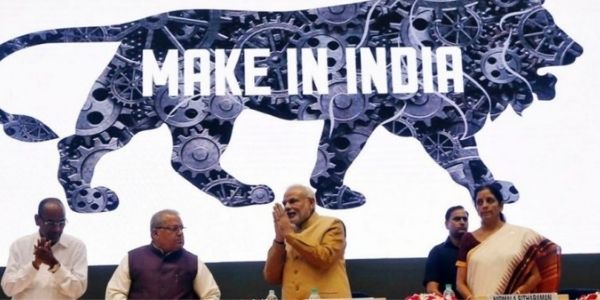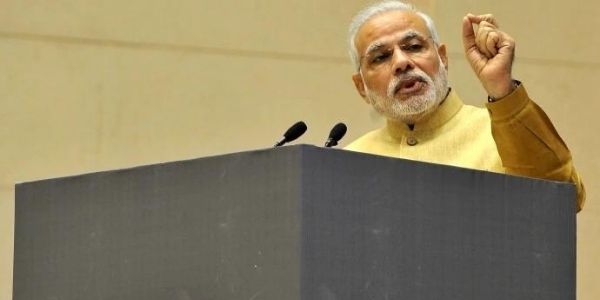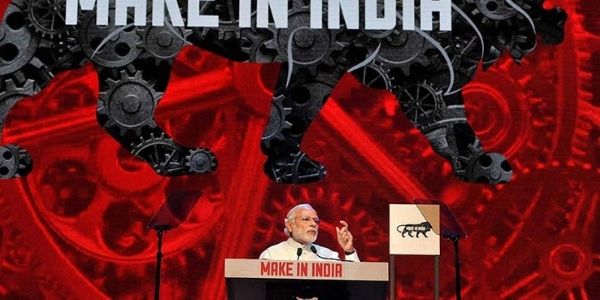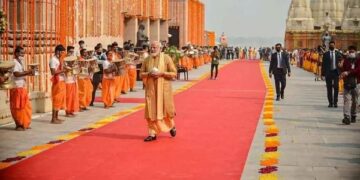This article is mainly focused on Make in India. Get all the Make in India logo, Made in India scheme, and project information. Further, as it is a vital concept for the IAS exam, our other articles have covered different topics on the IAS exam study materials. It will help you with the IAS exam preparation; therefore go through the complete article and get all information on the Make in India and other related details. One can refer to our previous articles for more information on the different topics for the IAS exam. Therefore, let’s begin learning about the Make in India logo.

Introduction
In the first place, Make in India is an initiative by the Government of India to make and enhance companies to develop, manufacture and assemble products made in India. Further, Make in India targeted 25 economic sectors for job creation and skill enhancement, and to transform India into a global design & manufacturing export hub. In the later part of the article, we have added all information like the Make in India logo, project, scheme, and other related information.
| Country | India |
|---|---|
| Prime Minister(s) | Narendra Modi |
| Key people | Ministry of Commerce and Industry (India) |
| Launched | 25 September 2014; 7 years ago |
| Status | Active |
What is Make in India?
To begin with, Make in India is a project by the government of India initiative established in 2014 by Prime Minister Narendra Modi.
Objectives
- In the first place, it aimed to increase the growth of the manufacturing sector to 12-14% per year.
- Further, the creation of 100 million additional jobs in the manufacturing sector by 2022. Then, to increase the share of the manufacturing industry in the GDP to 25% by 2022.
- It aimed to skill development programs among the urban poor and the rural migrants to foster inclusive growth. In addition, it was encouraging everyone’s environmentally sustainable growth.
- Lastly, it encourages the global competitiveness of the Indian manufacturing sector.

Sectors Under Make in India
- Automobiles.
- Aviation.
- Chemicals.
- IT & BPM.
- Pharmaceuticals.
- Construction.
- Defense manufacturing.
- Electrical machinery.
- Food processing.
- Textiles and garments.
- Ports.
- Leather.
- Media and entertainment.
- Wellness.
- Tourism and hospitality.
- Railways.
- Automobile components.
- Renewable energy.
- Mining.
- Biotechnology.
- Space.
- Thermal power.
- Roads and highways.
- Lastly, Electronics systems.
Why is it important?
One must always seek why behind in the things we do. So, likewise, there is a purpose behind the MAke in India.
The primary purpose of launching the campaign is the poor condition of manufacturing in India. Further, over the past two decades, India’s growth story seems to have been led by the services sector, and there was a huge leap in the IT and BPO sectors. Then, focusing on manufacturing is that no other industry seems to have such a huge multiplier effect on economic growth in a country. It encourages businesses, both Indian and foreign, to invest in manufacturing in India, which will assist this sector and generate employment at both skilled and unskilled levels.
Schemes
Various schemes are launched by Make in India. We have added the details below.
- Skill India Mission – Under this scheme aims to skill at least 10 million individuals in various sectors in India. Further, there is a need to upskill the extensive human resource. It is done through the different development programs across the country.
- Startup India – It is to build an ecosystem that could facilitate the growth of startups. It will help with economic growth and create large-scale employment.
- Digital India – Under this, it aims to transform India into a knowledge-based and digitally empowered economy by making many services entirely online. It is a flagship program with the vision to transform India into a digitally empowered society.
- Further, the Pradhan Mantri Jan Dhan Yojana – Ensures financial inclusion and access to financial services, including banking savings & deposit accounts, remittances, credit, insurance, pension, etc.
- Smart Cities – It aims to transform and rejuvenate Indian cities. The goal is to form 100 smart cities in India through several sub-initiatives. Further, all towns are given a time of five years to complete the projects.
- AMRUT – It stands for Atal Mission for Rejuvenation and Urban Transformation, and to build basic public amenities and make 500 cities in India.
Continued

- Swachh Bharat Abhiyan – Under this project government for making India a nation by promoting cleaner and basic sanitation and hygiene.
- Further, Sagarmala – Under this aims at developing ports and promoting port-led development in the country. It is responsible for fostering port-led development in the country by exploiting India’s 7,517 km long coastline and 14,500 km of potentially waterways.
- International Solar Alliance (ISA) – Further, in this initiative will promote research and development in solar technologies and formulate policies in that regard.
- Lastly, AGNII – Accelerating Growth of New India’s Innovation to achieve the innovation ecosystem in the country by connecting people and assisting.
Initiatives
Under the Make in India project, sectors like railways, insurance, defense, and medical devices have been opened up for more Foreign Direct Investment. Further, the government has taken steps to improve India’s ‘Ease of Doing Business rank. In addition, India climbed 23 points in the Ease of Doing Business index to 77th place in 2019. It also hopes to improve physical infrastructure chiefly through the PPP investment mode. Also, an Investor Facilitation Cell assists investors from the time of their arrival in India. In addition, the Shram Suvidha Portal, eBiz portal, etc., have been launched. The eBiz portal provides single-window access to eleven government services connected with starting a business in India.
Five Industrial Corridors
- Delhi-Mumbai Industrial Corridor (DMIC)
- Amritsar-Kolkata Industrial Corridor (AKIC)
- Bengaluru-Mumbai Economic Corridor (BMEC)
- Chennai-Bengaluru Industrial Corridor (CBIC)
- Lastly, Vizag-Chennai Industrial Corridor (VCIC)
Make in India 2.0
Further, the Make in India 2.0 mainly focuses on the below sectors.
- Capital goods
- Auto
- Defense
- Pharma
- Renewable energy
- Biotechnology
- Chemicals
- Leather
- Textiles
- Food processing.
- Gems and Jewellery
- Shipping
- Railways
- Information Technology
- Construction
- Legal Services
- Tourism and Hospitality Services
- Medical Value Travel
- Communication Service
- Financial Services
- Education Services
- Audio Visual Services
- Lastly, Accounting and Finance Services
UPSC Exam Suggestions and Tips
Now let us understand some essential tips for the UPSC exam.
- In the first place, one must understand the exam syllabus and the pattern of the paper. For this purpose, one must go through the previous year’s question papers.
- Further, various platforms will help you by giving details of the IAS exam. We have added all information like IAS exam requirements, application form, syllabus, pattern, books, and other related information. Click Here.
- Then, to clear the IAS exam, having a proper plan is vital. Further, one must make proper use of available time and give time for all subjects. It is vital for one to take a break in between studies, it will help you to concentrate on the exam preparations.
- In addition, one must know which are the best books and best sources for the IAS exam preparations. Further, revision plays an important role in any exam. One must revise before starting with the new chapter.
- Later, answer writing is again important for the exam. In addition, as it will help you increase your writing speed, you will come to know how to add essential points with a few words.
- Lastly, one must give mock tests and test series. It will help you to increase and to know your skills better. Finally, one must go through the official site for more details on the UPSC exam. Click here for more details on the same. Learn More. Try to note down all points.
Conclusion – Make in India

In summary, the article tells you about the make in India logo, make in India scheme, activities, logo and other related information. It is one of the essential topics for the IAS exam, and we have added enough details that will help you with the exam. Further, added vital links that are required for the IAS exam preparations. In addition, in our previous article, we have covered information on the other IAS exam study materials. We understand it is difficult for one to remember all things. Therefore, it is only possible with hard work and your efforts. Further, this exam will check your dedication along with your subject knowledge. Even though there are many students who apply for the exam, only a few will be able to clear the exam. Therefore, work hard and prepare well for the exam.
FAQs
Lastly, go through the FAQs discussed above. It will give you more understanding on the topic.
Make in India is a major national program of the Government of India designed to facilitate investment, foster innovation, enhance skill development, and protect intellectual property.
Zero Defect Zero Effect slogan by Prime Minister of India, Narendra Modi.
In September 2014, the Make in India project started.
Editor’s Note | Make in India
In conclusion, this article will provide all details of the exam like the Make in India logo, project, scheme, and other related information for the IAS exam. Further, we have added essential tips that will help you with the IAS exam preparation. In addition, one must invest proper time and energy in the IAS exam. As this exam is not like any exam, one must work hard and put in all efforts. In addition, we suggest you to make a proper plan and prepare well for the exam. Lastly, we wish you good luck with your UPSC exam.






